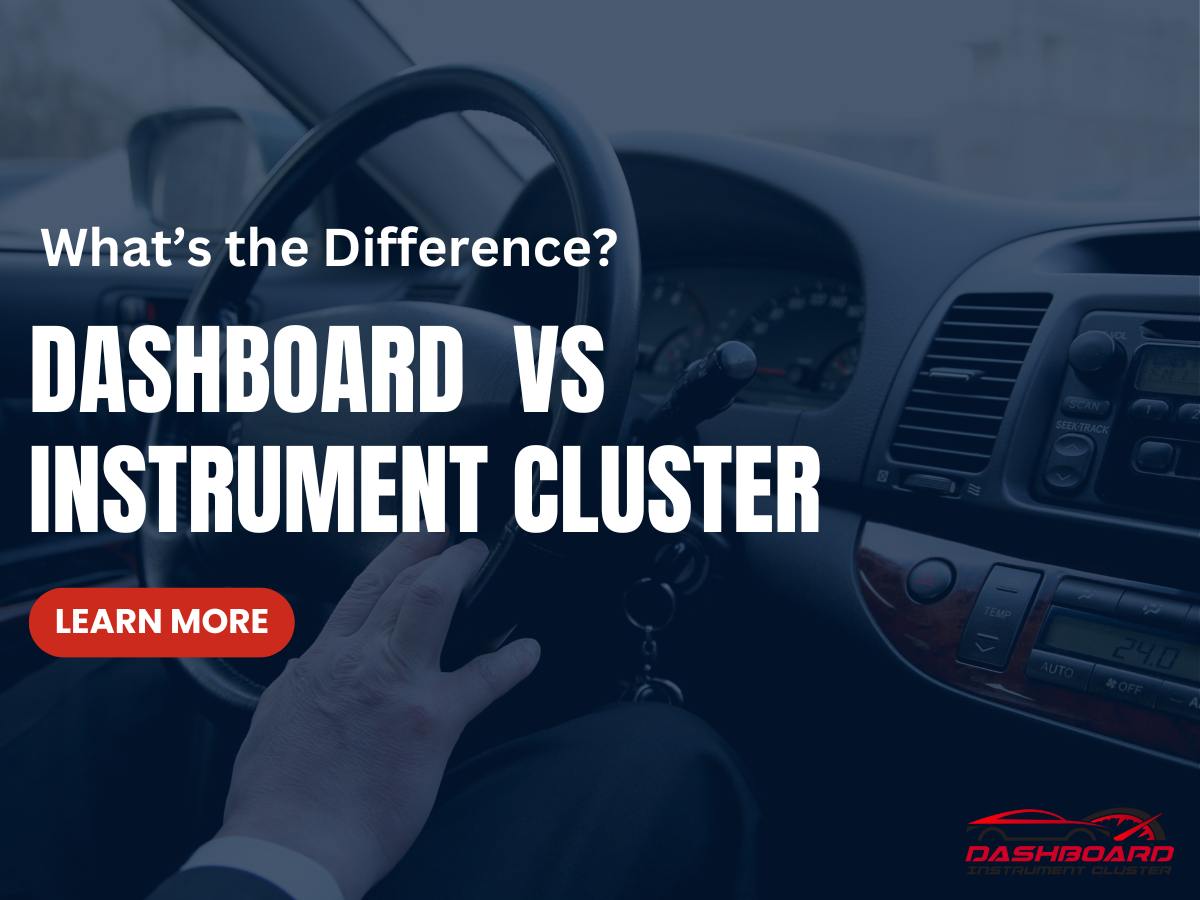
Home » Blog » Information » Dashboard vs Instrument Cluster: What Is The Difference?

When it comes to the inner workings of a vehicle, the terms “dashboard” and “instrument cluster” are often used interchangeably, leading to confusion among many. However, understanding the distinction between these two components is crucial for anyone who owns or operates a vehicle. In this article, we will delve into the world of dashboards and instrument clusters, highlighting their similarities and differences. By the end of this discussion, you’ll have a clearer understanding of how these two elements work together to ensure a smooth and safe driving experience.
On the other hand, the instrument cluster, often referred to simply as the “cluster,” is a critical part of the dashboard. It’s the section directly in front of the driver, typically housing the speedometer, fuel gauge, odometer, and other important indicators. This cluster is where you find the crucial information needed to monitor your vehicle’s performance and ensure safe driving.
While the dashboard and instrument cluster are distinct components with unique functions, they share several similarities that contribute to the overall operation of a vehicle.
Advances in automotive technology have led to the integration of electronic displays within both the dashboard and instrument cluster. This technology provides a more comprehensive and intuitive experience for the driver, making it easier to navigate settings and access information
Safety is paramount in any vehicle. The dashboard and instrument cluster collectively contribute to vehicle safety. The dashboard facilitates quick access to safety-related controls, such as lights and wipers, while the instrument cluster displays vital data like engine temperature and warning indicators that alert the driver to potential issues.
The primary function of the dashboard is to facilitate control over various vehicle systems, including audio, climate, and entertainment. In contrast, the instrument cluster is specifically designed to provide real-time information about the vehicle’s performance and status, making it easier for the driver to assess critical data at a glance.
The dashboard offers a broad range of controls that allow the driver to customize the driving experience. The instrument cluster, however, is more static in terms of interaction, as its primary purpose is to present information rather than provide control options.
While both the dashboard and instrument cluster can incorporate advanced technology, the instrument cluster typically focuses on integrating electronic displays for speed and diagnostics. The dashboard’s technology often encompasses multimedia features, navigation, and climate control systems.
Both the dashboard and instrument cluster contribute to vehicle safety, but they serve different aspects of it. The dashboard provides control over safety features, while the instrument cluster displays information that helps the driver maintain a safe and efficient driving experience.
Understanding these differences is essential for vehicle owners, as it enables them to make the most of their driving experience while maintaining vehicle safety. By recognizing the roles that these two components play, drivers can better appreciate the value they bring to their daily journeys.
At Dashboard Instrument Cluster, we specialize in repairing and replacing instrument clusters for all makes and models. Our expert technicians are equipped to ensure that your instrument cluster functions optimally, providing you with accurate and reliable information while on the road.
Contact us today to learn more about our services and how we can assist you in keeping your vehicle’s instrument cluster in top condition
We will try to give you an exact quote in 1 Business day